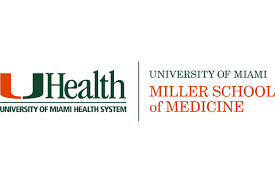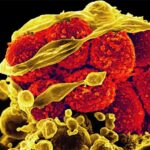 In our technologically rich society, it is extremely tempting to confuse technology with science. In fact, our friend Websters Dictionary even offers “applied science” as one of the definitions of technology. Although the relationship between the two is indeed close, certain distinctions should be drawn.
In our technologically rich society, it is extremely tempting to confuse technology with science. In fact, our friend Websters Dictionary even offers “applied science” as one of the definitions of technology. Although the relationship between the two is indeed close, certain distinctions should be drawn.
Science is essentially a system of knowledge. As such, it encompasses a methodology of investigation and criteria for the establishment of conclusions. It is dynamic by nature, even though the topic being studied (the physical universe in which we live) may not change. “Facts” are always accompanied by uncertaintyand therefore subject to reinterpretation and change in the face of newly discovered information. Because current information is always incomplete, progress requires the application of currently available knowledge to make educated “guesses” (we call them hypotheses) about productive avenues of future research. Science, therefore, is planted in the past, creating the future.
Technology, on the other hand, is a phenomenon of the present. How can current information be brought to bear in order to solve a given problemor improve an existing methodology? It feeds on available informationsometimes in some very creative and novel waysbut awaits scientific advances to enter new realms of activity.
Interestingly enough, not only does technology feed off science, but, frequently, science leaps forward on the shoulders of new technology. A classic current example is the case of the automatic internal defibrillator (“AID”). It was the medical scientific knowledge of the electrophysiology of cardiac conduction and its derangements that commanded the development of a device to defibrillate the fibrillating heart. Enter the personal saga of a young medical innovator who watched his colleague die from a cardiac arrest in the absence of the electrical paddles that might have saved him, and we have the birth of the concept of an internal defibrillator with the capability of following the hearts rhythm continuously, and applying a shock at the appropriate life-saving moment. After considerable time in the laboratory, there emerged a surgical procedure with a fair amount of hardware, and a 5-10% mortality, but a functioning internal defibrillator. More technological advances and the surgical procedure was reduced to the insertion of a single complex multifunctional “wire” percutaneously, attached to a subcutaneously placed, highly complex and multiply programmable and monitorable power source. Over time, this device was reduced in size to that of the previous generations pacemakers. Now the device, which can be inserted as an out-patient procedure with minimal morbidity, cannot only deliver a shock, but has complex algorhythms to detect and treat various types of arrhythmias, as well as to perform pacing and monitoring.
So much for science facilitating technology, however, with the declining risk of implantation, and the increasing functionality of the AIDs, the potential was created to apply this therapy to an increasing population of patients. Scientific investigation has subsequently revealed that as of now a very large and unrecognized population of patients; those who have suffered a myocardial infarction with a resulting significant decrease in systolic heart function; may have improved survival rates with the use of this device. Medical science will need to further define which of this large group are the ones who most benefit from this therapy. The answer to that question will provide new insights into the pathophysiology of arrhythmias and its relationship to ischemic heart disease.
Perhaps less obviously, science may even benefit from technological advances that are presumably totally unrelated. Who would have predicted that the remarkable expansion of processing power in the computer industry would provide a key instrument to helping to unlock the secrets of the human genome?
The Florida Heart Research Institute is the clear beneficiary of technologic advance. Through our study of the genetics of sudden cardiac death, the potential role of bone marrow stem cells in cardiac regeneration, the role of chimeric natriuretic peptides in the evolution and treatment of congestive heart failure and the impact of periodic acceleration on cardiopulmonary physiology, we are forever harvesting the advances of modern technology to benefit the advance of medical science.
Post Views: 839
 In our technologically rich society, it is extremely tempting to confuse technology with science. In fact, our friend Websters Dictionary even offers “applied science” as one of the definitions of technology. Although the relationship between the two is indeed close, certain distinctions should be drawn.
In our technologically rich society, it is extremely tempting to confuse technology with science. In fact, our friend Websters Dictionary even offers “applied science” as one of the definitions of technology. Although the relationship between the two is indeed close, certain distinctions should be drawn. 

























